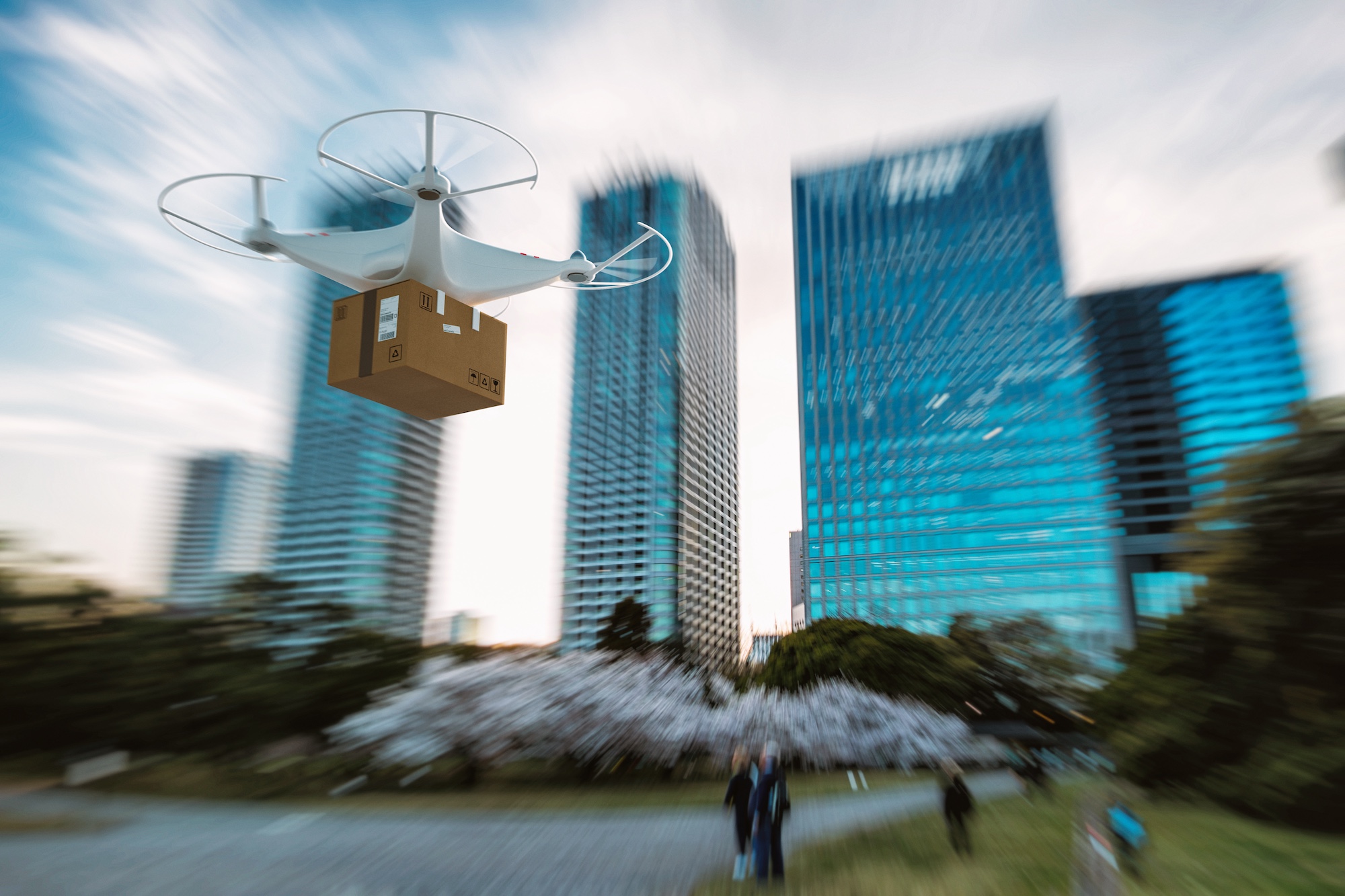
The Future of Quick Commerce: Integrating Electric Vehicles, AI, and Drone Delivery
Yashh Jhawar, Intern - Investment & Research
The rapid evolution of consumer behavior in India has given rise to quick commerce, a sector promising the delivery of goods in as short as 10-30 minutes. This model is changing the retail landscape, especially in urban areas, where the demand for speed and convenience has become paramount. Recent researches in India say the quick-commerce market is going to reach size nearly at $3.34 billion in 2024, while hitting almost at $9.95 billion by 2029. Its compound annual growth rate in the estimated period will stand above 4.5%. As the demand for rapid delivery services increases, companies are leveraging electric vehicles (EVs), artificial intelligence (AI), and drone technology to enhance their operational efficiency and sustainability. This article explores these key trends shaping the future of quick commerce.
Electric Vehicles: A Sustainable Solution
Electric vehicles are becoming integral to the logistics strategies of quick commerce companies. The rise of quick commerce has made electric vehicles (EVs) a top choice for last-mile delivery, offering cost efficiency and sustainability. EVs cost 30-40% less to operate than internal combustion engine equivalents, and government incentives make fleet electrification more accessible. By 2025, EVs are expected to make up 25% of last-mile delivery fleets.
Key players are leading this shift. Zepto, founded in 2021, delivers groceries within 8-10 minutes via over 100 micro-warehouses in cities like Mumbai and Bangalore. Blinkit aims to transition nearly all deliveries to EVs by 2030, enhancing efficiency while supporting sustainability. Swiggy Instamart, part of Swiggy’s platform, is also aligning with this trend, planning to integrate EVs into its operations. These examples highlight how EVs are transforming quick commerce logistics. With the quick commerce market projected to reach $5.5 billion by 2025, the integration of EVs not only reduces carbon emissions but also lowers operational costs associated with traditional fuel vehicles.
AI-Driven Delivery Tracking Systems
Artificial intelligence is revolutionizing delivery tracking systems, providing real-time visibility and efficiency in last-mile logistics. AI-powered platforms enable businesses to monitor deliveries from dispatch to arrival, ensuring transparency for both companies and customers. Predictive analytics plays a crucial role in this process; by analyzing historical data, AI algorithms can forecast delivery times and optimize routes based on real-time traffic conditions.
Automated dispatching is another significant advantage of AI systems. By assigning deliveries to drivers based on their location and availability, companies can streamline operations and reduce idle time—an essential factor in meeting the rapid delivery expectations of consumers today. Enhanced customer communication through automated notifications about order status changes further improves customer satisfaction. According to recent reports, implementing AI-driven solutions can improve delivery efficiency by up to 30%, significantly impacting overall operational costs.
The Promise of Drone Delivery
Drone technology is poised to redefine last-mile delivery in quick commerce. Drones offer a unique solution for rapid deliveries, especially in urban areas where traffic congestion can delay traditional vehicle deliveries. With the ability to fly directly to destinations, drones can significantly reduce delivery times, aligning perfectly with the quick commerce model. As drone technology matures, regulatory frameworks are evolving to accommodate commercial drone operations. Companies like Amazon Prime Air and Google’s Wing are already conducting pilot programs to test drone deliveries for various products, from groceries to pharmaceuticals. The integration of drones into existing logistics networks will enhance operational efficiency and expand market reach while providing a more sustainable alternative to traditional delivery methods. A study by McKinsey estimates that drone deliveries could account for 10% of all last-mile deliveries by 2030, underscoring the potential impact of this technology on the logistics landscape.
Key Trends Shaping Quick Commerce Delivery
1. Sustainability: The push for sustainable practices is driving the adoption of EVs and drones in quick commerce. Companies are increasingly prioritizing eco-friendly solutions to meet consumer expectations and regulatory requirements.
2. Technological Integration: The convergence of AI, IoT (Internet of Things), and drone technology is creating smarter logistics systems that enhance efficiency and customer experience.
3. Consumer Expectations: As consumers demand faster and more reliable services, businesses must adapt their logistics strategies to meet these expectations without compromising quality or sustainability.
4. Collaboration: Partnerships between tech companies, logistics providers, and regulatory bodies will be crucial for developing effective drone delivery systems and optimizing existing logistics networks.
5. Data-Driven Decision Making: Leveraging data analytics will allow companies to refine their operations continually, improving route optimization, inventory management, and customer engagement strategies.
To sum it all up, the future of quick commerce delivery is being shaped by the integration of electric vehicles, AI-driven tracking systems, and drone technology. As businesses embrace these innovations, they can enhance operational efficiency while meeting the growing demands for speed and sustainability in last-mile logistics. By leveraging these technologies effectively, businesses can not only improve their service offerings but also contribute positively to environmental goals and consumer satisfaction. As the quick commerce sector continues to evolve, the combination of these advancements will play a pivotal role in shaping its future landscape.
